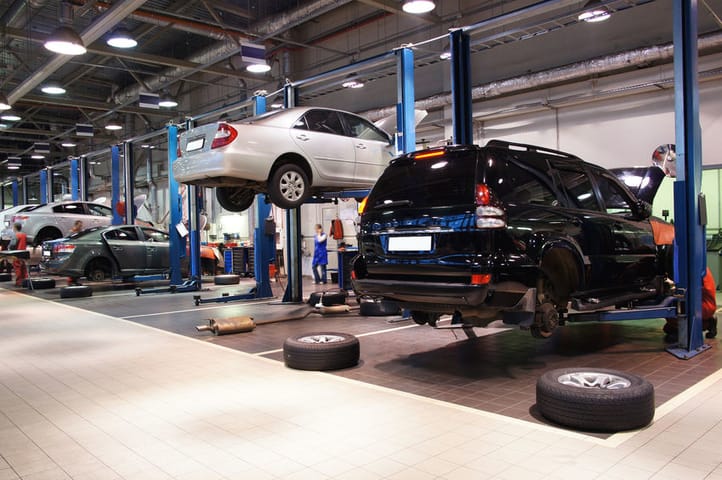All Categories
Featured

Maintaining your car's tires is necessary to guarantee a smooth, secure, and effective driving experience. Two key services that are frequently overlooked however have a significant influence on tire durability and performance are tire turning and positioning. These solutions aid maintain your vehicle running effectively and prevent irregular tire wear that can impact both safety and gas economic climate. Allow's dive right into what tire rotation and placement are and why they are necessary for your auto.
What Is Tire Rotation? Tire rotation is the procedure of moving your tires from one placement to one more to guarantee they use equally. Considering that your cars and truck's tires operate at different rates relying on their setting (front tires versus rear tires), rotating them on a regular basis aids to disperse the wear uniformly, leading to a much longer lifespan for your tires.
Tires on the front axle tend to use faster than those on the back axle, particularly in front-wheel-drive autos, where the front tires deal with both steering and power. On the various other hand, back tires may put on erratically depending upon the vehicle's weight distribution and driving problems. By turning your tires every 6,000 to 8,000 miles (or as advised by the supplier), you'll guarantee a more balanced wear pattern.
What Is Tire Positioning? Tire placement, additionally understood as wheel positioning, describes changing the angles of your vehicle's wheels to the manufacturer's specifications. Correct placement ensures that your tires are directing in the appropriate direction, and it helps make the most of tire life and improve lorry handling. There are 3 primary facets of positioning: camber, caster, and toe.
Camber refers to the tilt of the tires from the front of the car. If your tires are tilted way too much internal or outside, it can trigger uneven wear. Caster describes the angle of the guiding axis when checked out from the side of the car. This affects the security of the guiding, particularly when driving straight. Toe refers to the angle at which the tires aim internal or outside when checked out from above. This affects just how your lorry tracks when driving. A proper placement guarantees that all four tires are pointing directly in advance and are angled correctly. Imbalance can result from striking craters, visuals, or merely from the wear of suspension components over time.
Why Tire Turning and Placement Matter. Extended Tire Life. Both tire turning and alignment aid avoid unequal tire wear. When your tires wear uniformly, they last longer, which can save you money in the future by decreasing the demand for early substitutes.
Improved Safety. Appropriate tire turning and alignment enhance car stability and handling. Misaligned tires or unevenly used tires can adversely impact your ability to steer and stop your vehicle, specifically in emergency situation scenarios. Routine upkeep ensures your tires execute efficiently, supplying a more secure driving experience.
Much Better Fuel Efficiency. If your tires are not lined up correctly, they might drag against the roadway surface area, triggering resistance. This extra friction can lower gas effectiveness, causing your automobile to take in even more gas. Normal tire alignment guarantees that your vehicle moves efficiently, improving gas mileage.
Boosted Comfort. Misalignment or erratically worn tires can bring about a rougher adventure, as your cars and truck may pull away or trigger vibrations. By maintaining your tires rotated and straightened, you'll appreciate a smoother and much more comfortable driving experience.
Signs That Your Tires Required Turning or Alignment. It's necessary to remain alert for any indications that your tires need turning or positioning. Look out for these usual signs:
Irregular Tire Wear: If you observe that one tire is significantly a lot more worn than the others, it might be time for a rotation or alignment. Guiding Pull: If your vehicle pulls away while driving straight, this might indicate imbalance. Vibrations: If you really feel vibrations in the steering wheel or the vehicle itself, it can be an indicator of imbalance or uneven tire wear. Screeching Tires: Unusual tire sound can additionally show improper placement or the demand for a tire rotation. Exactly how Commonly Should You Rotate and Straighten Your Tires? Tire rotation should usually be done every 6,000 to 8,000 miles or as specified in your lorry's owner's handbook. It's a good concept to revolve your tires throughout every oil change, as this will help you remain on top of routine upkeep.
When it comes to placement, it does not require as regular service. Normally, placement should be inspected a minimum of as soon as a year or whenever you see issues like drawing away or resonance. You might additionally require placement if you've hit a huge pothole or aesthetic, which can toss your wheels out of placement.
Conclusion: Maintain Your Tires in Leading Shape. Tire rotation and alignment are vital services that keep your vehicle running efficiently, securely, and efficiently. By taking the time to have your tires revolved and lined up on a regular basis, you're buying your vehicle's performance and long life, while also boosting your safety and security on the road. Stay positive with tire upkeep, and your car will certainly thanks with much better gas economic situation, boosted handling, and extended tire life.
Latest Posts
Untitled
Engine Tune Up Near Me Quickly! at MO
Trust Bare Bones Furnishings and Mattress for High Quality Services in Glens Falls, NY